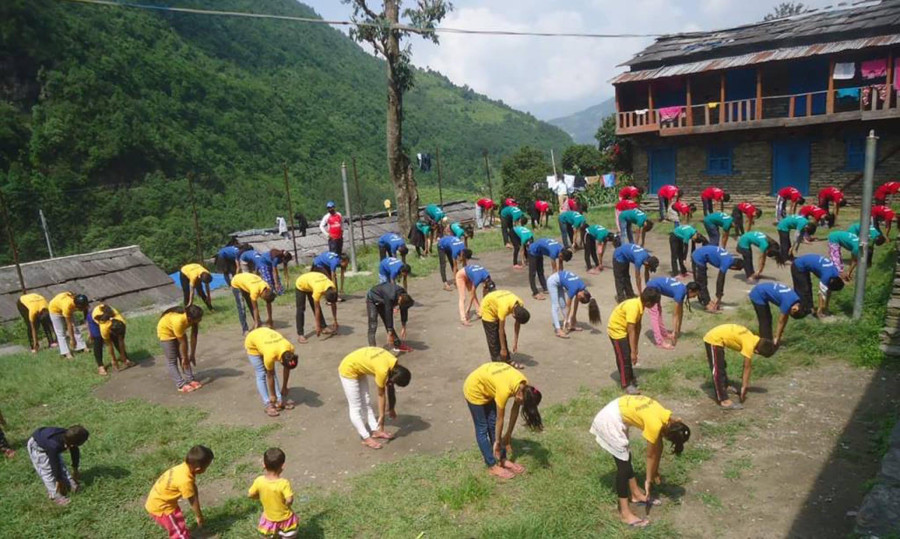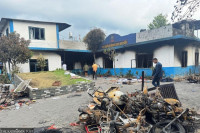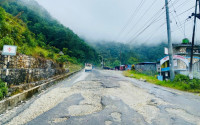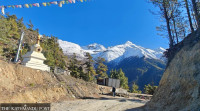Gandaki Province
Without funds to hire teachers, Myagdi fundraises through musical performances
As the government sets hiring quotas based on the number of students, many community schools in districts like Myagdi are woefully understaffed.
Ghanashyam Khadka
Whenever a ‘lahure’ returns from foreign employment or tourists pass through the village of Mudi in Myagdi, they are welcomed with a madal performance, organised by the local Aama Samuha (Mothers’ group). During the performance, there is a call for donations from the guests, with these funds then used to hire teachers for the local public schools.
Such shows are staged throughout the year and locals have managed to generate enough money to hire additional teachers for their understaffed schools.
Community schools in Myagdi, like most others in Nepal’s hilly districts, are characterised by inadequate funding, insufficient and improper staffing, dilapidated facilities, and above all, a lack of teachers. This state of affairs is of the utmost concern for those who still remain in the villages, said Dal Bahadur Thapa, an official with the Education Development and Coordination Unit.
Community schools in the district simply do not have enough teachers. Locals blame the government’s policy of allocating teachers based on the number of students in an area with insufficient consideration given to grade levels, a mix of students and specialisation needs.
“We are without any vacant post to hire teachers under the government’s quota,” said Jag Bahadur Kisan, principal of the Buddhi Bikas Secondary in Mudi. “If we hire teachers under the private quota, we need around one million rupees yearly to pay their salaries.”
While not begrudging the village’s limited success in raising additional funds through madal performances, Kisan lamented that they would rather spend their time and effort upgrading the quality of education rather than raising funds.
Forty-eight of the district’s secondary schools are without any vacant posts for teachers, even though the number of teachers is grossly imbalanced and the process fraught with political meddling, say locals.
“Hiring salaried teachers under the private quota has proved to be a hassle,” said Kumar Pun, principal of Adarsha Secondary in Annapurna Rural Municipality. “It’s hard to find specialist teachers. We can’t promise quality education, but we can’t merge the schools either because of the distance between the two nearest schools.” Adarsha Secondary has 14 students in its secondary level, but the nearest secondary school is a four-hour walk away. A merger is out of the question, said Pun.
According to data from the Myagdi Education Development and Coordination Unit, there are 830 teachers in the primary level for a total of 16,872 students in the district; 246 teachers for 9,466 students in the lower secondary level; and 165 teachers for 4,849 students in the secondary level. Due to the imbalance in the allocation of the teachers, the density of teachers is higher in areas around the district headquarters of Beni.
“The number of schools is sizeable in rural areas as well, as they were established at the initiative of locals, but it’s become hard for them to continue functioning,” said Thapa. “The government policy to allocate teachers on the basis of the number of students is posing problems.”
While communities like Mudi have had some success in raising funds, they still find it difficult to employ specialist teachers, especially those for science and maths. “Students are compelled to solve papers without being taught by specialists,” Thapa said.




 14.12°C Kathmandu
14.12°C Kathmandu










